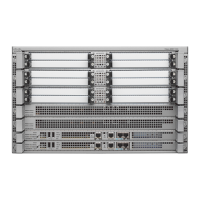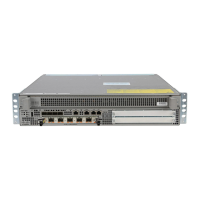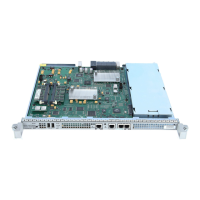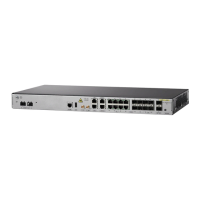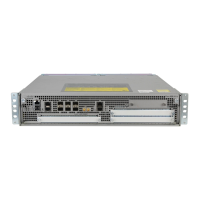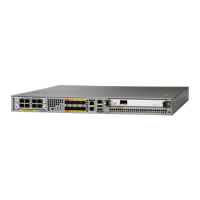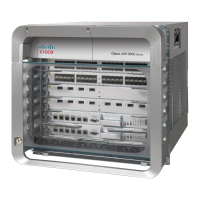
 Loading...
Loading...
Do you have a question about the Cisco ASR1006 - ASR 1006 Modular Expansion Base and is the answer not in the manual?
| Rack Units | 6U |
|---|---|
| Form Factor | Rack-mountable |
| Operating Temperature | 32 to 104°F (0 to 40°C) |
| Product Type | Router |
| Slots | 6 |
| Redundancy | Redundant Power Supply Supported |
| Maximum Throughput | 100 Gbps |
| Dimensions | 17.5" Width |
| Weight | Approximately 130 lbs (59 kg) |
| Interfaces/Ports | Varies by installed modules |
| Memory | 4 GB |
| Storage Temperature | -40°F to 158°F (-40°C to 70°C) |
| Relative Humidity | 5% to 95% (noncondensing) |
| Compliance | CE, UL |
Provides an overview of software functionality specific to the Cisco ASR 1000 Series Routers.
Describes the structure and chapters of the document.
Covers topics related to the software packaging model and architecture for the routers.
Explains how to access the command-line interface using console or remote connections.
Provides an overview of the console port on the Cisco ASR 1000 Series Router.
Provides an overview of Telnet and SSH configurations on the routers.
Describes how to configure persistent Telnet connections on the routers.
Describes how to configure persistent SSH connections on the routers.
Provides an overview of running the routers using consolidated or individual subpackages.
Discusses managing and configuring routers with consolidated and individual subpackages.
Discusses In-Service Software Upgrades (ISSU) for redundant platforms.
Details the upgrade process with service impact for nonredundant platforms.
Describes hardware redundancy capabilities on the Cisco ASR 1000 Series Routers.
Provides an overview of software redundancy features on the routers.
Explains the configuration and functionality of Route Processor Redundancy (RPR).
Describes the Stateful Switchover (SSO) feature for processor redundancy.
Covers scaling for PPP sessions and L2TP tunnels based on hardware combinations.
Discusses the maximum number of IP sessions supported based on hardware combination.
Provides configuration tasks for achieving maximum scalability on the routers.
Lists the requirements before configuring the Cisco License Call Home feature.
Explains the tasks and commands used to activate software licenses.
Lists the requirements before configuring the Call Home feature.
Explains the tasks to configure the Call Home feature.
Describes how to configure destination profiles for alert notifications.
Lists the requirements before configuring the Right-To-Use license.
Details the restrictions and limitations for the Right-To-Use license.
Explains how to activate evaluation licenses for technology packages.
Provides an overview of the Gigabit Ethernet Management interface.
Lists common tasks for managing the Ethernet interface.
Provides an overview of network synchronization goals and features.
Explains how to configure network synchronization on the routers.
Lists the restrictions pertaining to bridge domain interfaces.
Provides information about bridge domain interfaces and supported features.
Provides steps for configuring a bridge domain interface.
Provides a feature overview of Multilink Frame Relay.
Explains the configuration processes for Multilink Frame Relay.
Provides an overview of Layer 2 Virtual Private Network interworking.
Explains Ethernet interworking, also known as bridged interworking.
Explains IP interworking, also called routed interworking.
Explains the configuration steps for Frame Relay to ATM interworking.
Covers Gigabit EtherChannel for Virtual Private Wire Service (GEC for VPWS).
Provides an overview of tracing function and trace files.
Explains how the tracing function logs internal events and creates trace files.
Determines how much information about a module is stored in the trace buffer or file.
Provides an overview of the web user interface for the routers.
Details the steps to enable and configure the router for web user interface access.
Describes the procedure to access the web user interface.
Lists commands with the 'platform' keyword that produce no or unhelpful output.
Example configuration to boot the router from a consolidated package on a TFTP server.
Example of performing an ISSU upgrade using consolidated packages.
